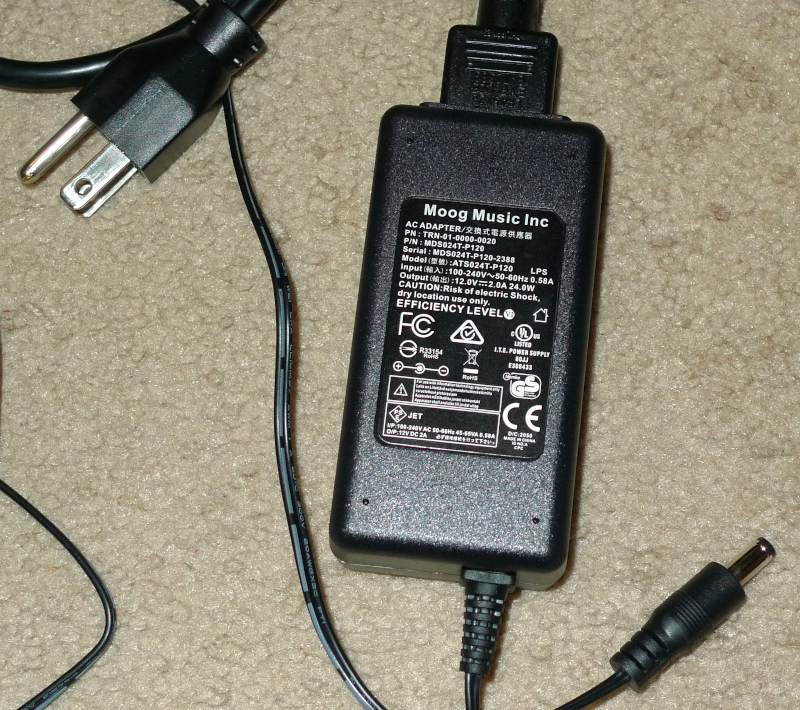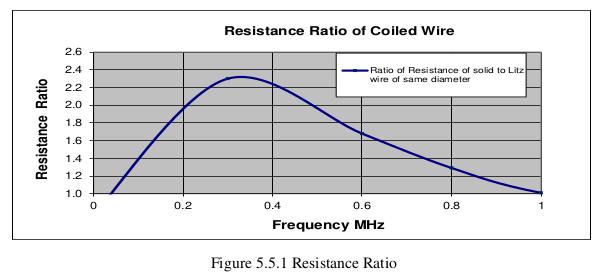Roger's / Rob's P3, SN #5
Thought folks might enjoy a few snaps of Roger's latest creation for Rob Schwimmer. I took these while it was in the shop for a minor repair job:
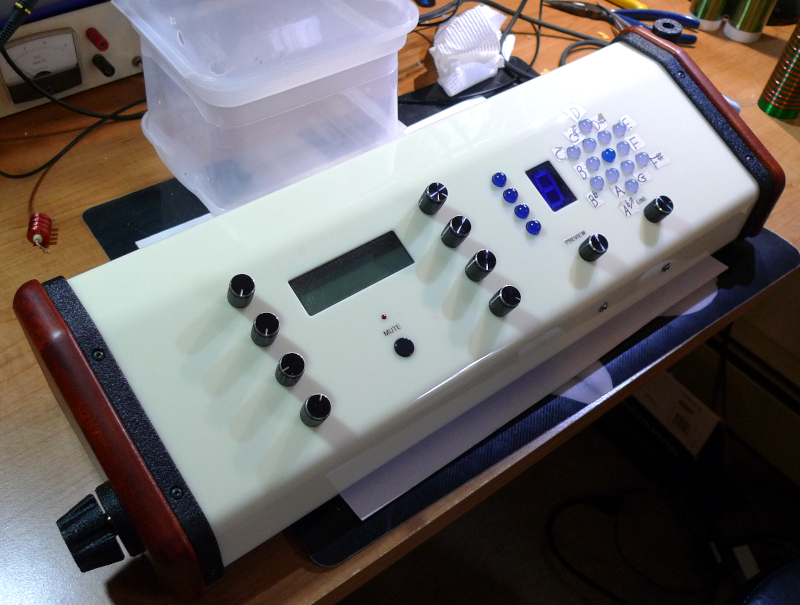
Above: Lookin' good!
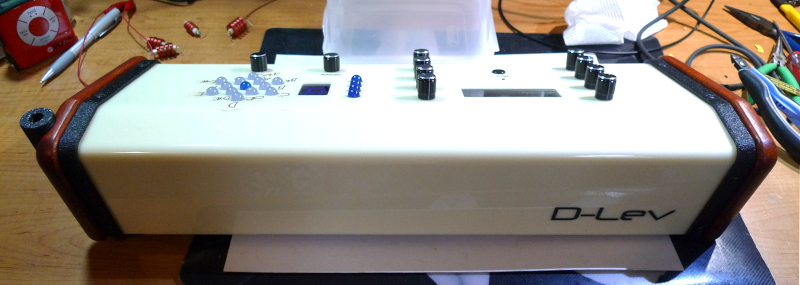
Above: Audience view. I like the logo size and position, rather like a stage piano / synth.
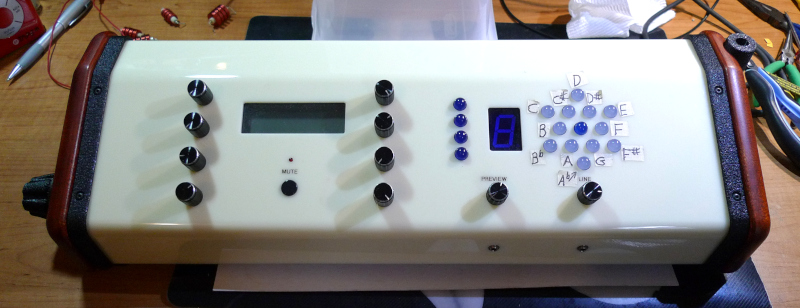
Above: Player view.
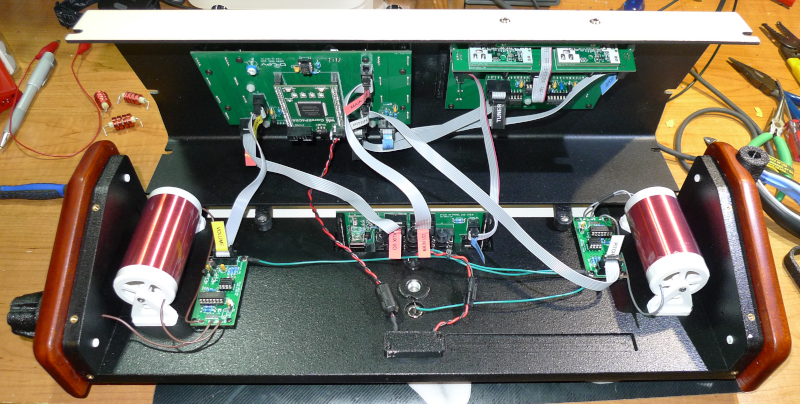
Above: Guts view. The removed top shell is supported by two padded swing-out legs - Roger thinks of everything!
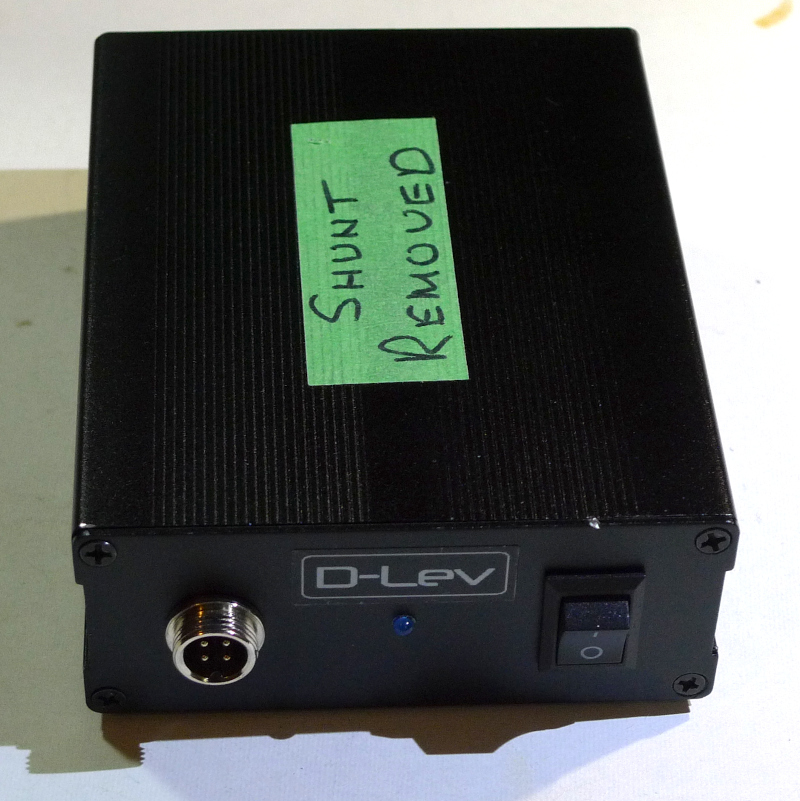
Above: The power supply box that sits on the floor. Love the logo! Aviation connector on left, power LED in center, power rocker switch on right. I think aviation connectors are really the way to go here, barrel connectors aren't secure and they scarily can't guarantee voltage, polarity, or even AC/DC.
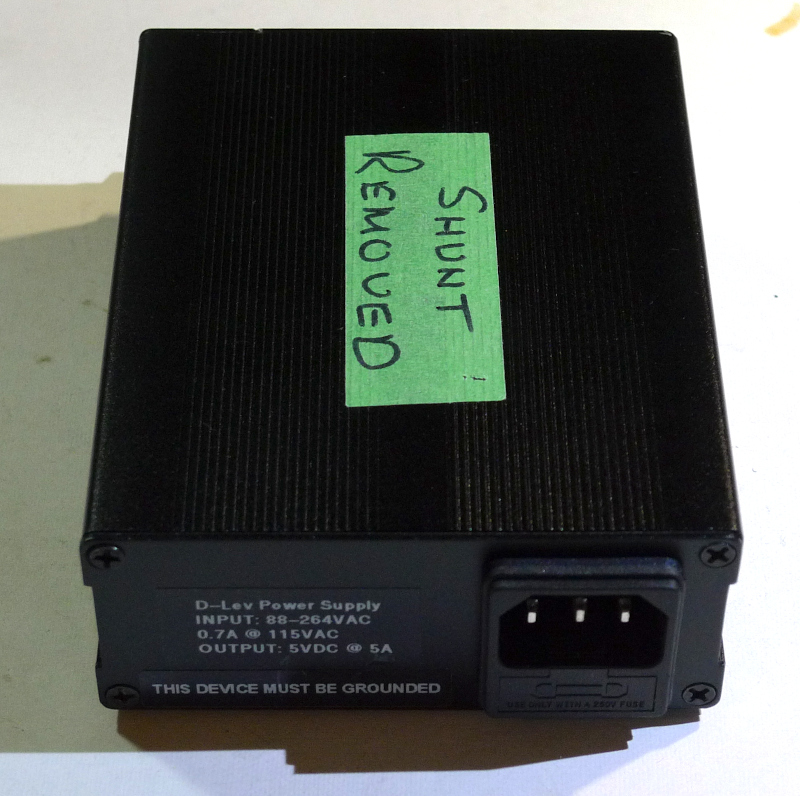
Above: Power supply box showing fused C14 type AC entrance. Really pro labeling job!
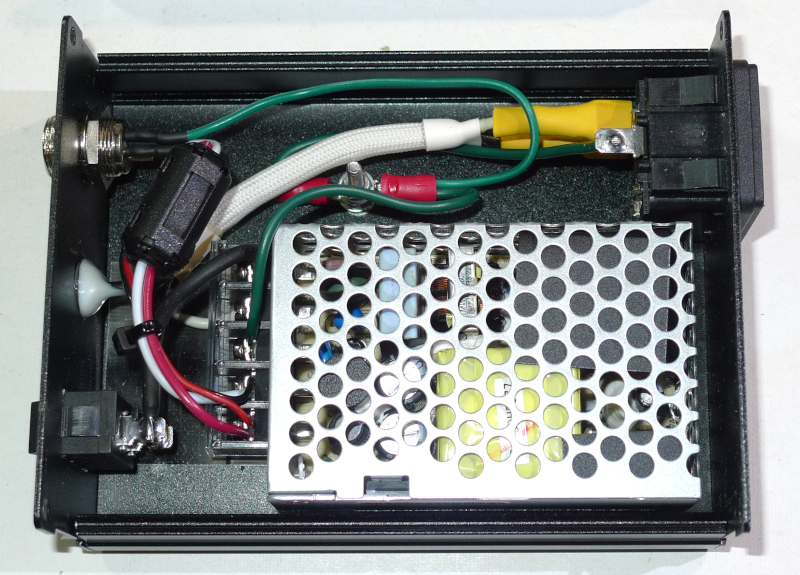
Above: Power supply box guts. Not just beautiful on the outside! Note the ferrite bead on the DC leads, and the braided nylon tube on the AC leads.
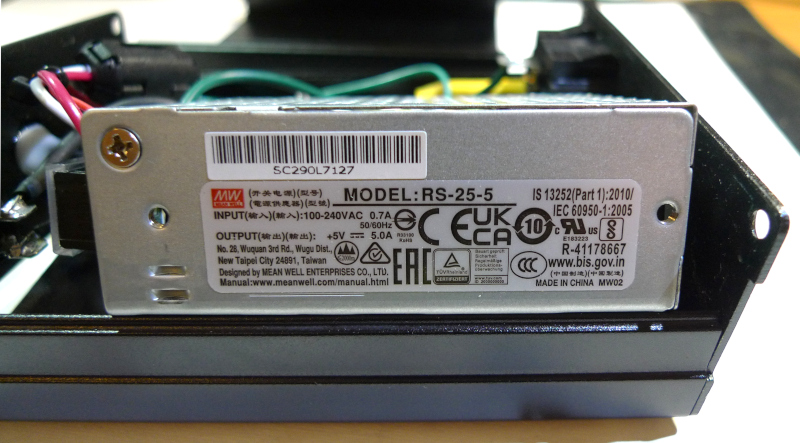
Above: The Mean Well switching power supply inside the power supply box - a brand you can trust (or so I have read). It has a trimmer pot on the left (not shown) so I assume you can over-volt it a bit if necessary. The D-Lev typically draws around 0.5A @ 5V so this is way overkill, but not necessarily a bad thing.
I think it's best to place the switcher far away from the D-Lev guts, as this solution does. The opportunity to route AC ground through it is there too. One might also make this box do double duty by mounting Mute and ACAL momentary footswitch buttons on it.
